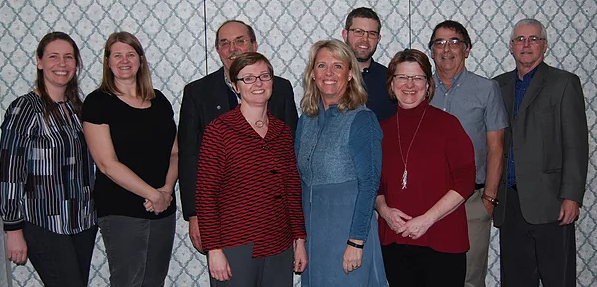A new initiative launched this week, called The Thames River Phosphorus Reduction Collaborative, is developing innovative tools, practices and technologies to help farmers and municipalities reduce phosphorus and algal blooms in the southwestern Ontario watershed which feeds into Lake Erie.
“We’re determined to improve the quality of water in the Thames, and that means working with everyone from farmers to drainage engineers and conservation authorities to First Nations and universities to come up with practical, cost-effective water management and drainage solutions for both urban and agricultural areas,” said Randy Hope, Mayor of Chatham-Kent and the project’s co-chair.
Elevated levels of phosphorus in water that runs off agricultural fields and collects in municipal drains can trigger the growth of toxic algal blooms in downstream water bodies. The western basin of Lake Erie has experienced several such incidents in recent years, disrupting the ecosystem, causing the closure of beaches and even, in Toledo, Ohio a ban on city drinking water for two days. Lake St. Clair, which is an indirect pathway to Lake Erie, has also been experiencing problems with near-shore algal blooms.
Among the initiatives aimed at resolving the problem is a commitment made in 2016 between Canada and the U.S. to a 40 per cent reduction in the total phosphorus entering Lake Erie. There is also a commitment among Ohio, Michigan and Ontario to reduce phosphorus by 40 per cent by 2025.
“We’re doing research with the goal of creating a suite of tools and practices that farmers can use to address different situations,” said Mark Reusser, Vice-President of the Ontario Federation of Agriculture (TBC). He added that the group has gathered research from around the world and is looking into how it could be applied locally.
Project partners are working to fulfill some of the recommendations made in the “Partnering in Phosphorus Control” Draft Action Plan for Lake Erie that the Canadian and Ontario governments released in March. The governments completed a public consultation in May and are expected to have a plan in place next year.
The project is administered by the Ontario Federation of Agriculture and the Great Lakes and St. Lawrence Cities Initiative. It was funded in part through Growing Forward 2 (GF2), a federal-provincial-territorial initiative. The Agricultural Adaptation Council assists in the delivery of GF2 in Ontario.
The project’s new website is at www.thamesriverprc.com
Photo: The project team. Back row from left: Mel Luymes, Tina Schankula Campione, Jim Myslik, Henry Heckey, Don Hilborn, Charles Lalonde (Project Co-ordinator),
Front row from left: Nicola Crawhall, Tiffany Svensson, and Lois Harris. Credit:Thames River PRC.










